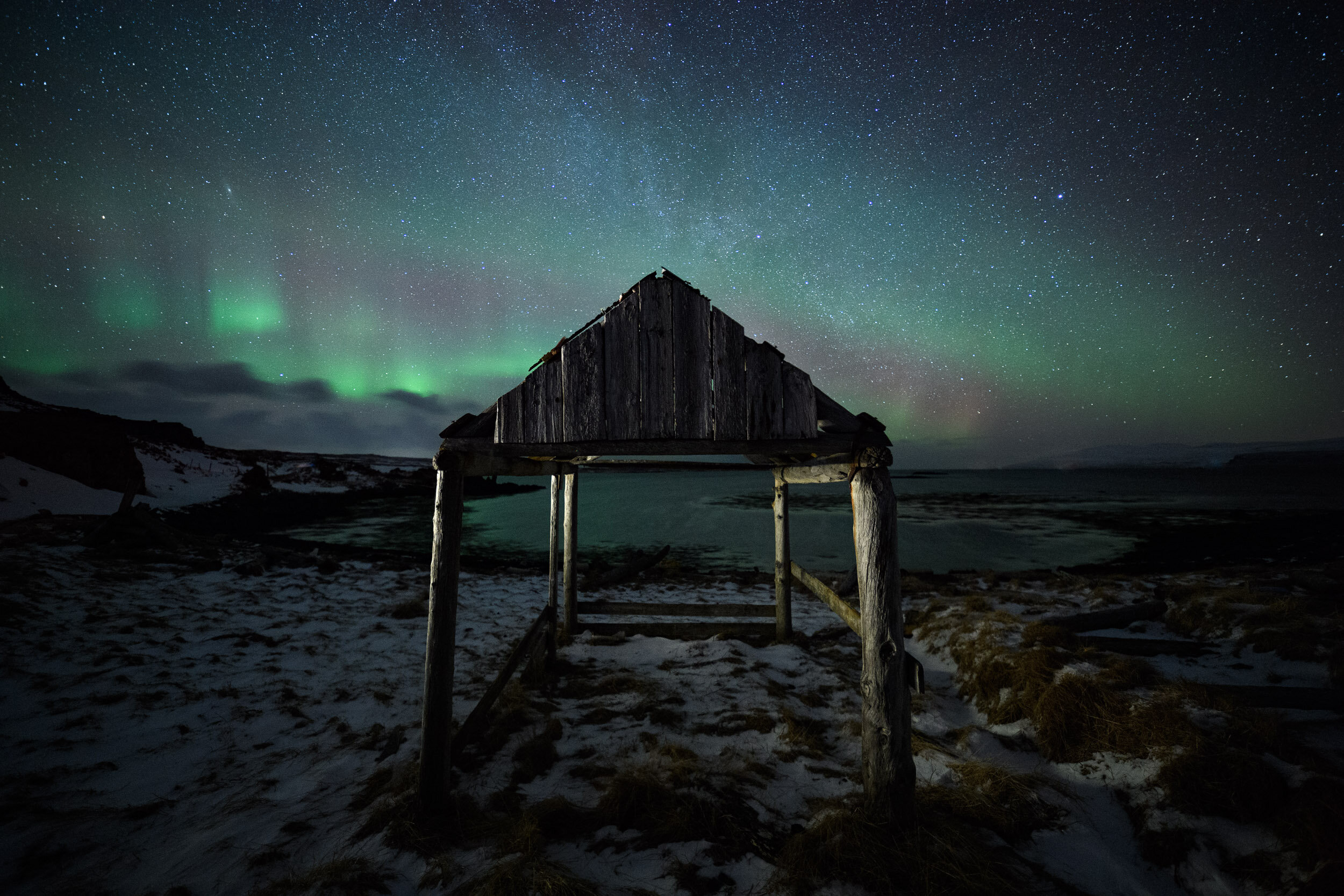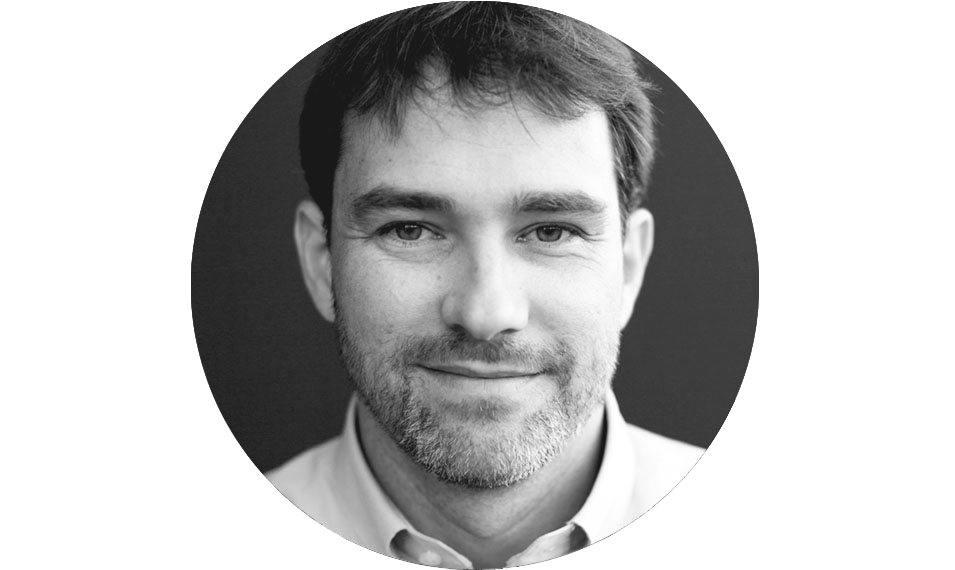Iceland North Coast
Each area of Iceland has its own unique character and features. In the north, the massive waterfalls are mostly wide rather than tall, contrasting the tall, narrow ones in the south. The north tends to be colder, and snowier. It’s definitely less crowded. This trip comes at the end of winter, with longer days, and hopefully with a good chance of seeing the aurora above the Arctic Henge.
Tour Details
April 8-17, 2023 — Completed
This is a 9-night, 10-day tour. Including travel days, it’s 10 nights and 11 days. Your adventure begins with an overnight flight on Thursday, April 7, and ends with your flight home on the afternoon of Monday, April 17.
$7,995 for singles, $13,495 for two sharing a room. Register below.
Skill level
Participants must have at least basic photo skills, know their cameras well, and be comfortable shooting RAW in manual mode with a DSLR or high-end mirrorless camera.
Group size
9, with 2 instructors — 5:1 ratio
Tour Leaders
Registration
This event has passed. Thanks for your interest!
| • Deposit of $1,995 is required to reserve a single spot on the tour. |
| • Deposit of $3,495 is required to reserve spots for a couple. |
| • Balance of $6,000 (single) or $9,000 (couple) is due on January 7, 2023. —> Pay balance here. |
| • You may choose the “Pay in Full” ticket if you desire to pay all at once. |
| • Last day for a cancellation request is January 6, 2023 (see cancellation and refund policy). |
| • See further below for what is and is not included with your ticket. |
The Iceland North Coast Experience
Itinerary
Day 1: Reykjavik. Arrive on a morning flight, then rest up or explore the compact downtown on foot. You could have a traditional Icelandic breakfast at Cafe Loki, which is right next to Hallgrimskirkja, or enjoy a continental breakfast at the Sandholt Bakery on Laugavegur, the main shopping street. Down by the harbor you could visit the famous Icelandic Phallological Museum, the Reykjavík Museum of Photography and Harpa Concert Hall. Our first official meeting will be for dinner. We’ll meet in the hotel lobby and walk to one of Reykjavik's best restaurants.
Days 2-3: We’ll begin our journey north in the morning. We may visit the Grabrok craters and/or the Hraunfossar waterfalls on the way to our destination, a small fishing town in a narrow north-coast fjord named Siglufjörður. This will be our base for 2 nights, where in addition to dramatic photography we can visit a photography museum, folk music center and a museum about the history of herring fishing.
Days 4-8: We’ll spend 4 days and nights in the area around Lake Myvatn, which has a spa that is similar to but less crowded than the famous Blue Lagoon in the south. We can visit the Myvatn Nature Baths, perhaps take a whale watching tour from Husavik and make a pilgrimage to the Arctic Henge. We’ll visit Akureyri, the largest town in the north. Not to be missed are Dettifoss and Goðafoss, two of the most impressive waterfalls in Iceland, the latter of which served as the location of the opening sequence of the Ridley Scott film Prometheus.
Day 9: This is a long travel day, and we’ll drive all the way back to Reykjavik, with stops along the way including the rhinoceros-shaped rock formation at Hvitserkur and possibly the ancient fortress at Borgarvirki. We’ll check into our hotel in Reykjavik in time for a farewell dinner.
Day 10: Enjoy a last morning in Reykjavik before heading to the airport for your afternoon flight home.
What You Should Know
Participants must have at least basic photo skills, know their cameras well, and be comfortable shooting RAW in manual mode with a DSLR or high-end mirrorless camera.
Night photography experience is helpful, but not necessary. Even folks with extensive experience shooting at night will find this tour challenging, stimulating and inspiring.
If you would like to attend this tour but are unsure whether you have adequate night photography skills, we can offer pre-tour tutoring to get you ready for your adventure with us. Alternatively or additionally, a few of us have written books that may be productive pre-tour reads.
What You Will Learn
You’ll go home after the tour with a body of both day and nighttime images made in a variety of environments and conditions. Instruction on photographing the aurora borealis will be offered, along with one-on-one field guidance as requested.
TOPICS COVERED WILL INCLUDE:
photographing the aurora borealis
making successful photographs in difficult conditions (weather, ice)
and more …
As this is a photo tour rather than a workshop, the emphasis is on getting participants to great locations with great light and making sure that everyone has the trip of a lifetime. We figure that you don’t travel to Iceland very often, and you wouldn’t want to spend your time in a classroom. As with most of our international tours, we will not be offering formal lessons or image reviews, but rather assistance as needed in the field. We’ll be photographing day and night.
That said, we do encourage you to think about and set goals for the trip.
WHAT WOULD YOU LIKE TO GAIN FROM THIS EXPERIENCE?
great images?
lasting memories?
a break from the work-a-day stresses?
learn some new photography skills?
see and photograph the aurora borealis?
all of the above?
The instructors will be available for one-on-one guidance in the field. We’ll be glad to review your images with you during quieter moments, but there won’t be formal group image-review sessions.
Night Conditions
Logistics & General Info
Ticket Info
Included:
nine nights in single or shared accommodations
all transportation in Iceland in a comfortable all-wheel-drive Sprinter van, except FlyBus transfer from the airport to Reykjavik
breakfast and dinners from dinner on the first day to breakfast on the last day
Not Included:
international flights to and from Reykjavik
transfer from the airport to Reykjavik
breakfast on the first day, and all lunches
alcohol
Travel
You are responsible for your airfare to and from Reykjavik (KEF). Except for your airport transfer, all transportation in-country is included, and will be in a roomy 15-passenger Sprinter all-wheel-drive van with high clearance and studded tires.
Lodging & Food
The tour will be based in four different tourist-class hotels in the north of Iceland, and in Reykjavik. In general, Icelandic hotels are clean, stylish and comfortable. In Reykjavik, we will stay at a lovely boutique hotel with a wonderful art collection.
The trip is inclusive of breakfasts and dinners, beginning with a special welcome dinner on the first evening through breakfast on the last day. We will eat well, with breakfast at our hotel each morning, and dinner in our hotel or at a restaurant each night.
Weather
Expect daytime highs in the 30s F, lows in the 20s.
Expect temperatures just above or near freezing day and night, although temps occasionally dip into the 20s, and there is always the possibility of a winter storm. One of our recent groups experienced the Full Monty of an Icelandic winter storm, and it was intense. Ferocious wind and blowing snow can make getting around impossible. At times like these, we’ll work on and share our images, or visit museums or other cultural attractions.
Recommended Attire
The best way to prepare is to bring lots of layers, including waterproof and windproof outerwear: boots, jacket, pants and at least two pairs of gloves, preferably at least one pair of flip-top mittens, two hats and lots of hand warmers.
If you are not sure-footed (or even if you are), please consider a pair of crampons or Yaktrax for walking on ice and snow.
Exertion Level
The exertion level of this tour is Easy to Moderate. (See more about our classifications.)
This adventure should be gentler than our Iceland South Coast trip. We’ll still be traversing a wide variety of terrain, potentially including mud, snow and ice. There will be uneven ground and it will probably be slippery. Most of our locations will be close to the tour van, but you should be prepared to walk a quarter- to a half-mile over snow and ice. We’re planning a 2- to 3-hour whale watch excursion, so bring your sea legs.
Additional Info
Please read our FAQs section for more information about skill and gear requirements, and other information that pertains to all our workshops and tours.
If you have questions, please contact us—we're happy to talk it over with you.
Making Lemonade in Iceland ...
“Both the weather and aurora forecasts were favorable, so we headed out on the long, lonely road to Raufarhöfn.”
I had traveled to the north of Iceland on my second trip to the country in 2013, and had always wanted to go back. The opportunity never presented itself until fate diverted our 2018 South Coast Tour to the north when the weather turned sour.
Fortunately for us, we had an incredibly creative and flexible group of travelers with us. We had struggled through the first three days of wind and rain and ice, and with six or seven more of the same predicted, we were not sure of what else to do. Our crafty group thought outside of the box––make that outside of the rain—and asked if we would consider taking them to the north instead of continuing along the south coast. Just like that, we threw caution and our pre-paid reservations to the wind and did a completely different tour, to an area we didn’t know very well. The plan was brilliant, the weather up north was better, and a good time was had by all.
In our travels, we came across signs for a heretofore unknown-to-us “archeological” site called the Arctic Henge, and plans were laid. It was a couple of hours from our northern base, but the possibility of aurora above this impressive site was impossible to resist.
Both the weather and aurora forecasts were favorable, so we headed out on the long, lonely road to Raufarhöfn, one of the most remote and northernmost villages in Iceland where the Arctic Circle lies just off the coast. As we made our way further north and east, a thick shroud of fog settled onto the landscape surrounding us. The forecast was still for clear skies, but our eyes told us a different story. We pushed on, ever-hopeful that the clouds would part and the energy from the sun would collide with particles in our outer atmosphere to light up the skies in green and magenta.
We arrived at twilight, and the short of it is that the closer we got to the henge, the denser the fog became. Whatever was happening a few hundred miles out in space would not be revealed to us on this night.
No matter, we were well equipped to make lemonade, and lemonade we made. The fog proved the perfect substrate for backlighting the stones, and as it grew darker, the sky changed from a deep blue to an oddly intense orange from the lone sodium vapor streetlight of the nearby village. Then the alien arrived, and our adventure was complete.
On this next trip, we hope to capture the elusive northern lights, but even if we don’t, our alien friends will no doubt be there to greet us.





































